 PHP Framework
PHP Framework Laravel
Laravel Laravel development: How to implement WebSockets communication using Laravel Echo and Pusher?
Laravel development: How to implement WebSockets communication using Laravel Echo and Pusher?Laravel is a popular PHP framework that is highly scalable and efficient. It provides many powerful tools and libraries so that developers can quickly build high-quality web applications. Among them, Laravel Echo and Pusher are two very important tools through which WebSockets communication can be easily implemented. This article will detail how to use these two tools in Laravel applications.
- What are WebSockets?
WebSockets is a two-way communication protocol that can achieve higher real-time and faster data transmission. Compared with traditional HTTP requests, WebSockets can maintain the state of the connection and transfer data between the client and server even if there is no request or response. WebSockets can provide better user experience and higher application performance, and can be used in a variety of real-time application scenarios, such as chat applications, games, etc.
- Introduction to Laravel Echo and Pusher
Laravel Echo is an event broadcast framework that provides a simple, consistent API to let you connect real-time communication channels on the client side . Echo relies on Pusher, and Redis can be used as an alternative when Pusher is unavailable. Pusher is a real-time WebSockets service that helps you easily add real-time functionality to your application. Pusher is a hosted solution that allows you to offload all WebSockets management tasks to a third-party service for better performance. Focus on the business logic of the application.
- Configuring Laravel Echo and Pusher
In the Laravel project, you first need to install Echo and Pusher. You can use the composer command to install:
composer require pusher/pusher-php-server pusher/pusher-http-laravel beyondcode/laravel-websockets npm install --save laravel-echo pusher-js
Installation After completion, you need to configure Pusher related information in the .env file:
PUSHER_APP_ID=your-app-id PUSHER_APP_KEY=your-app-key PUSHER_APP_SECRET=your-app-secret PUSHER_APP_CLUSTER=your-app-cluster
Then in the config/broadcasting.php file, configure Broadcaster as pusher:
'default' => env('BROADCAST_DRIVER', 'pusher'),
'connections' => [
'pusher' => [
'driver' => 'pusher',
'key' => env('PUSHER_APP_KEY'),
'secret' => env('PUSHER_APP_SECRET'),
'app_id' => env('PUSHER_APP_ID'),
'options' => [
'cluster' => env('PUSHER_APP_CLUSTER'),
'encrypted' => true,
],
],
],- Use Pusher Laravel WebSockets runs websocket server
Pusher has an open source library Laravel WebSockets that allows you to run a WebSockets server on your own server, thereby saving costs and improving performance and flexibility. The specific operations are as follows:
-
Install the database tables and data required to run Laravel WebSockets
php artisan websocket:install
-
Fill the configuration required for Laravel WebSockets
php artisan websocket:publish
- Create a listener (in EventServiceProvider)
protected $listen = [
'AppEventsExampleEvent' => [
'AppListenersExampleListener',
],
];-
Handle events
<?php namespace AppEvents; use IlluminateBroadcastingInteractsWithSockets; use IlluminateFoundationEventsDispatchable; use IlluminateQueueSerializesModels; class ExampleEvent { use Dispatchable, InteractsWithSockets, SerializesModels; public $data; public function __construct($data) { $this->data = $data; } public function broadcastOn() { return ['test_channel']; } public function broadcastAs() { return 'example-event'; } }
Then, you can use The following code pushes events:
use AppEventsExampleEvent; use IlluminateSupportFacadesEvent; Event::dispatch(new ExampleEvent(‘Example payload’, ‘Another example payload’));
- How to use Laravel Echo and Pusher on the front end
Using Laravel Echo and Pusher on the front end is very simple, the following is a basic example:
import Echo from 'laravel-echo'
import Pusher from 'pusher-js'
let pusher = new Pusher(process.env.MIX_PUSHER_APP_KEY, {
cluster: process.env.MIX_PUSHER_APP_CLUSTER,
encrypted: true,
})
let echo = new Echo({
broadcaster: 'pusher',
key: process.env.MIX_PUSHER_APP_KEY,
cluster: process.env.MIX_PUSHER_APP_CLUSTER,
encrypted: true,
auth: {
headers: {
‘Authorization’: ‘Bearer {access_token}’,
},
},
})Through the above method, we can use Laravel Echo and Pusher to implement WebSockets communication in Laravel applications.
Summary
Laravel Echo and Pusher provide a very convenient and fast WebSockets solution, allowing us to quickly build high-performance, real-time Web applications. This article introduces in detail how to configure Laravel Echo and Pusher, and use Pusher's Laravel WebSockets to build a WebSockets server locally. At the same time, use Laravel Echo and Pusher to connect to the WebSockets server on the front end to achieve real-time communication capabilities.
The above is the detailed content of Laravel development: How to implement WebSockets communication using Laravel Echo and Pusher?. For more information, please follow other related articles on the PHP Chinese website!
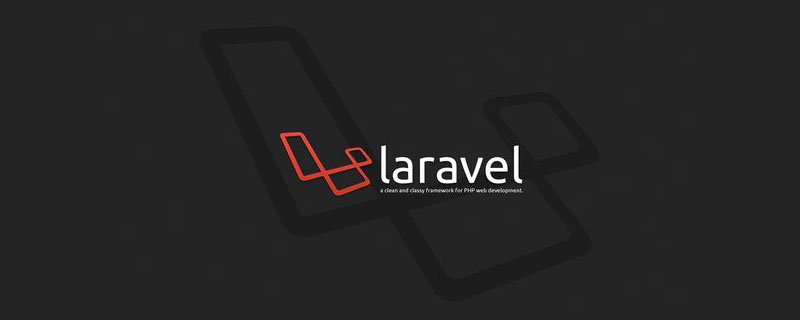 laravel单点登录方法详解Jun 15, 2022 am 11:45 AM
laravel单点登录方法详解Jun 15, 2022 am 11:45 AM本篇文章给大家带来了关于laravel的相关知识,其中主要介绍了关于单点登录的相关问题,单点登录是指在多个应用系统中,用户只需要登录一次就可以访问所有相互信任的应用系统,下面一起来看一下,希望对大家有帮助。
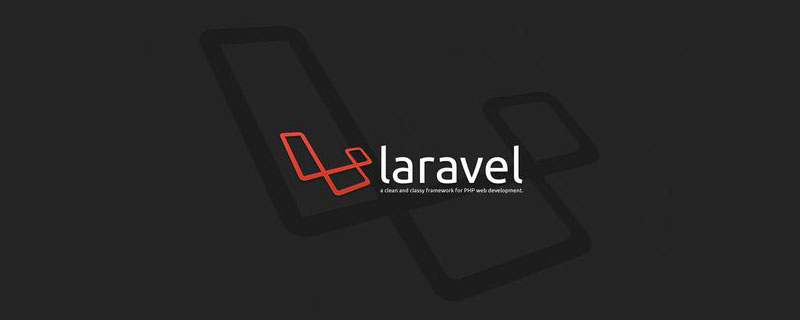 一起来聊聊Laravel的生命周期Apr 25, 2022 pm 12:04 PM
一起来聊聊Laravel的生命周期Apr 25, 2022 pm 12:04 PM本篇文章给大家带来了关于laravel的相关知识,其中主要介绍了关于Laravel的生命周期相关问题,Laravel 的生命周期从public\index.php开始,从public\index.php结束,希望对大家有帮助。
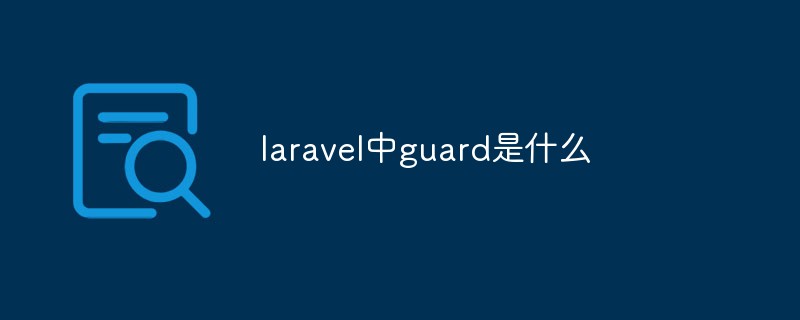 laravel中guard是什么Jun 02, 2022 pm 05:54 PM
laravel中guard是什么Jun 02, 2022 pm 05:54 PM在laravel中,guard是一个用于用户认证的插件;guard的作用就是处理认证判断每一个请求,从数据库中读取数据和用户输入的对比,调用是否登录过或者允许通过的,并且Guard能非常灵活的构建一套自己的认证体系。
 laravel中asset()方法怎么用Jun 02, 2022 pm 04:55 PM
laravel中asset()方法怎么用Jun 02, 2022 pm 04:55 PMlaravel中asset()方法的用法:1、用于引入静态文件,语法为“src="{{asset(‘需要引入的文件路径’)}}"”;2、用于给当前请求的scheme前端资源生成一个url,语法为“$url = asset('前端资源')”。
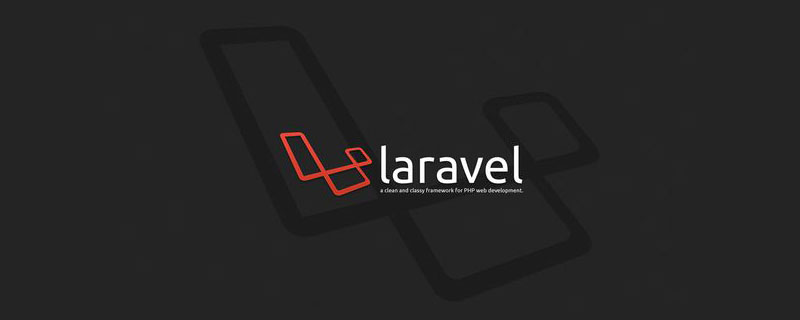 实例详解laravel使用中间件记录用户请求日志Apr 26, 2022 am 11:53 AM
实例详解laravel使用中间件记录用户请求日志Apr 26, 2022 am 11:53 AM本篇文章给大家带来了关于laravel的相关知识,其中主要介绍了关于使用中间件记录用户请求日志的相关问题,包括了创建中间件、注册中间件、记录用户访问等等内容,下面一起来看一下,希望对大家有帮助。
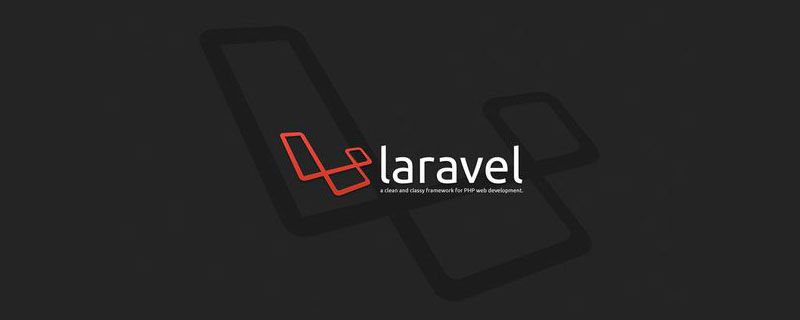 laravel中间件基础详解May 18, 2022 am 11:46 AM
laravel中间件基础详解May 18, 2022 am 11:46 AM本篇文章给大家带来了关于laravel的相关知识,其中主要介绍了关于中间件的相关问题,包括了什么是中间件、自定义中间件等等,中间件为过滤进入应用的 HTTP 请求提供了一套便利的机制,下面一起来看一下,希望对大家有帮助。
 laravel的fill方法怎么用Jun 06, 2022 pm 03:33 PM
laravel的fill方法怎么用Jun 06, 2022 pm 03:33 PM在laravel中,fill方法是一个给Eloquent实例赋值属性的方法,该方法可以理解为用于过滤前端传输过来的与模型中对应的多余字段;当调用该方法时,会先去检测当前Model的状态,根据fillable数组的设置,Model会处于不同的状态。
 laravel路由文件在哪个目录里Apr 28, 2022 pm 01:07 PM
laravel路由文件在哪个目录里Apr 28, 2022 pm 01:07 PMlaravel路由文件在“routes”目录里。Laravel中所有的路由文件定义在routes目录下,它里面的内容会自动被框架加载;该目录下默认有四个路由文件用于给不同的入口使用:web.php、api.php、console.php等。


Hot AI Tools

Undresser.AI Undress
AI-powered app for creating realistic nude photos

AI Clothes Remover
Online AI tool for removing clothes from photos.

Undress AI Tool
Undress images for free

Clothoff.io
AI clothes remover

AI Hentai Generator
Generate AI Hentai for free.

Hot Article

Hot Tools

Safe Exam Browser
Safe Exam Browser is a secure browser environment for taking online exams securely. This software turns any computer into a secure workstation. It controls access to any utility and prevents students from using unauthorized resources.

Notepad++7.3.1
Easy-to-use and free code editor

MantisBT
Mantis is an easy-to-deploy web-based defect tracking tool designed to aid in product defect tracking. It requires PHP, MySQL and a web server. Check out our demo and hosting services.

Dreamweaver CS6
Visual web development tools

ZendStudio 13.5.1 Mac
Powerful PHP integrated development environment





